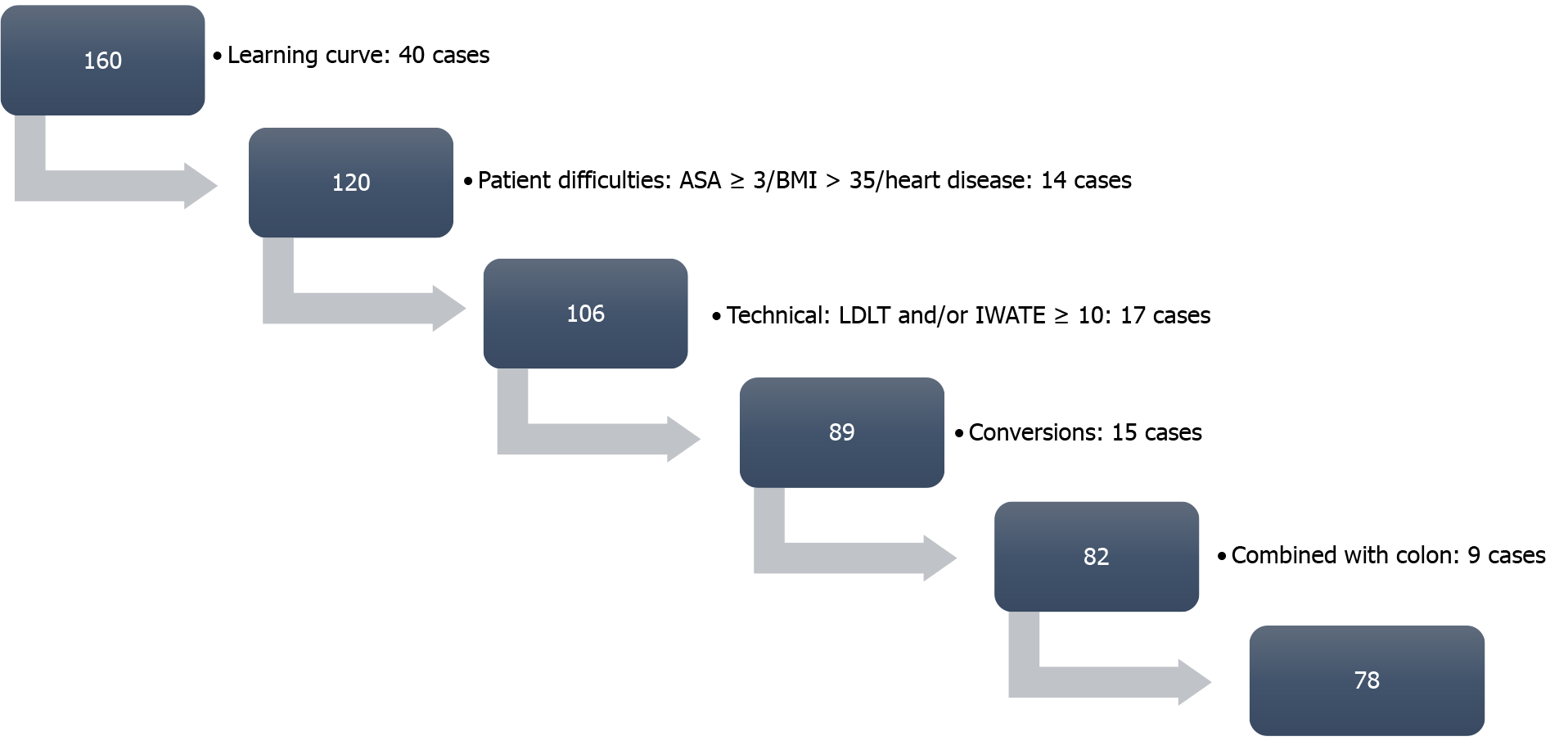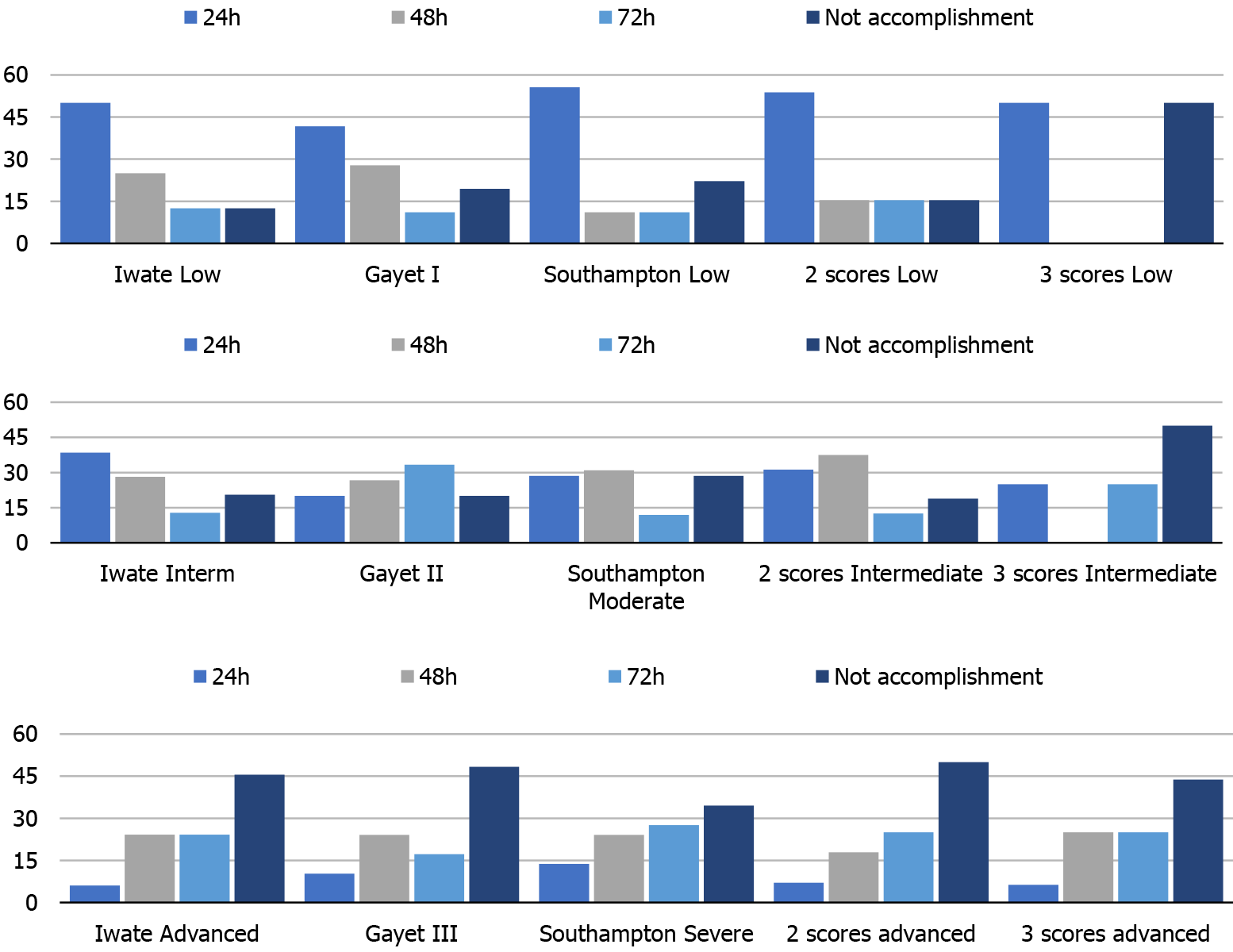Copyright
©The Author(s) 2022.
World J Gastrointest Surg. Mar 27, 2022; 14(3): 211-220
Published online Mar 27, 2022. doi: 10.4240/wjgs.v14.i3.211
Published online Mar 27, 2022. doi: 10.4240/wjgs.v14.i3.211
Figure 1 Perioperative protocols of fast-track in laparoscopic minor (A) and major (B) liver resections.
The minor (A) and the major (B) laparoscopic liver resections are protocols of 24-h and 48-h postoperative hospital stay. Actions with a red cross are under consideration for removal of this protocol after 5 yr of experience.
Figure 2 Flowchart of the patients included in the study.
After removal of excluded cases, a total of 78 cases was the final dataset of patients amenable for inclusion in a fast-track protocol. ASA: American Society of Anesthesiologists; BMI: Body mass index; LDLT: Living donor liver transplantation.
Figure 3 Accomplishment of fast-track protocols according to difficulty scores.
The accomplishment of a 24-h, 48-h and 72-h fast-track protocol (blue, green and yellow bars, respectively) was analyzed according to the difficulty scores of Iwate, Gayet and Southampton in their subcategories low (above), intermediate (middle) and severe (below). Interm: Intermediate.
Figure 4 Correlation of difficulty scores.
A comparison of Iwate (X-axis) and Southampton (Y-axis) scores was performed. As observed, several cases were upgraded or downgraded (blue circles), meaning a non-concordant classification between both scores.
Figure 5 Receiver operating curves for the prediction of 24-h postoperative hospital stay.
Iwate score was the best score with a cutoff point scoring of 5.5 with a sensitivity and specificity of 85.7% and 66.7%, respectively.
- Citation: Ciria R, Padial A, Ayllón MD, García-Gaitan C, Briceño J. Fast-track protocols in laparoscopic liver surgery: Applicability and correlation with difficulty scoring systems. World J Gastrointest Surg 2022; 14(3): 211-220
- URL: https://www.wjgnet.com/1948-9366/full/v14/i3/211.htm
- DOI: https://dx.doi.org/10.4240/wjgs.v14.i3.211













